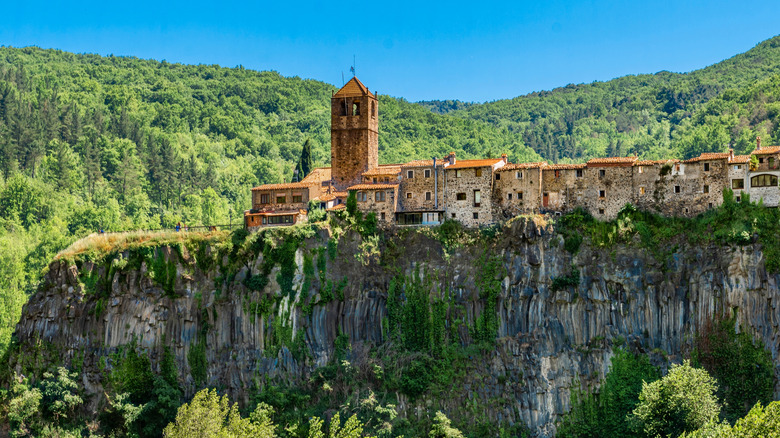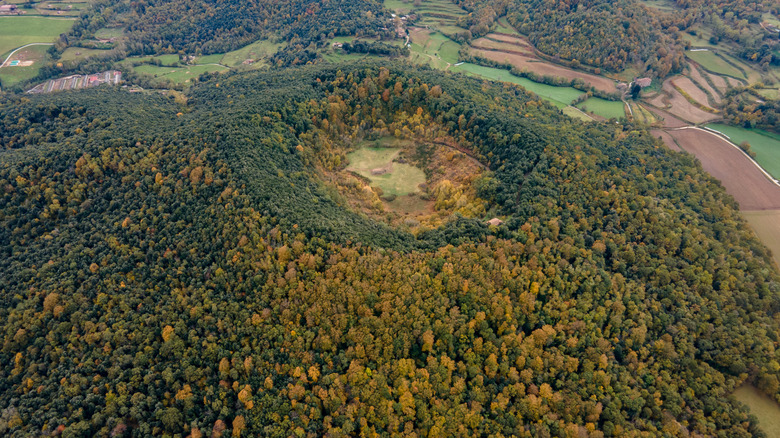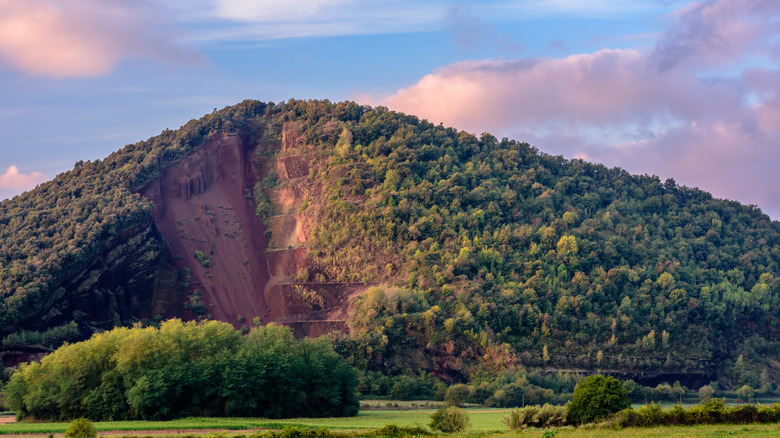There are a lot of places you can go in Europe to see volcanoes. Italy is home to one of the most famous volcanic eruptions in world history, which resulted in the must-see ruins at Pompeii. You will also find volcanoes in countries like Iceland and Greece. One European country you don’t tend to think about when it comes to volcanoes is Spain — not counting Mount Teide in the Canary Islands, which are 870 miles from the mainland. However, tucked under the Catalan Pyrenees, the region of La Garrotxa is a volcanic area that has remained dormant for about 12,000 years.
La Garrotxa is a region volcanologists classify as monogenetic, which means that the volcanoes that erupted here likely only did so once and went dormant. Here, the lava flows left behind a landscape defined by its rounded cones, which are now covered in thick oak forests. Since that prehistoric era, it has become home to a tight-knit culture with gastronomy-loving cities and charming medieval villages built between the cones and on the long-cooled lava flows. This includes the gravity-defying town of Castellfollit de la Roca, which sits on a razor-thin basalt edge that is shrinking every year.
Here’s everything you need to know about what to see and eat in this underrated region of Catalonia, plus the best way to get around.
Things to see and do in La Garrotxa
In Olot, you can learn more about the volcanic history of the region at the Espai Cràter Museum or take a short but steep walk up to one of the volcanoes, Volcà del Montsacopa, which is also a public park. To experience the most of La Garrotxa, you should also visit the nearby towns of Sant Joan les Fonts, where you can see the the ancient lava flows exposed next to a large waterfall, and Santa Pau, a lovely medieval village set in the volcanic landscape close to La Fageda d’en Jorda, a rare beech forest that changes color in the fall. There are also two iconic hikes: the short walk to the base of Volcà del Croscat, where you can learn about how its partial destruction led to the founding of the park, and Volcà de Santa Margarida, where you can hike a short trail (under 2 miles) to see the hermitage built in the middle of the grassy crater.
The most jaw-dropping town of the region is Castellfollit de la Roca, which is worth seeing for yourself how precariously the buildings sit right next to the edge of a cliff that was formed by ancient lava flows. The rockface has been shrinking over the years due to erosion, and experts predict that many houses will be lost in the future. You will have the best view of the town from outside of it, but it’s worth a quick stop to walk through the narrow lanes yourself and look over the cliff edge.




